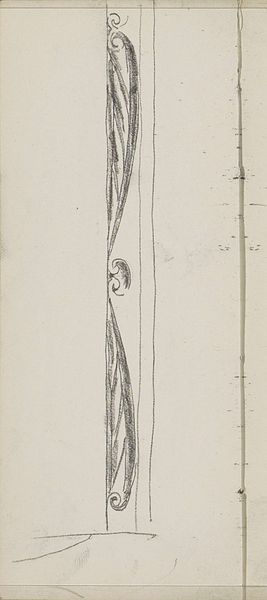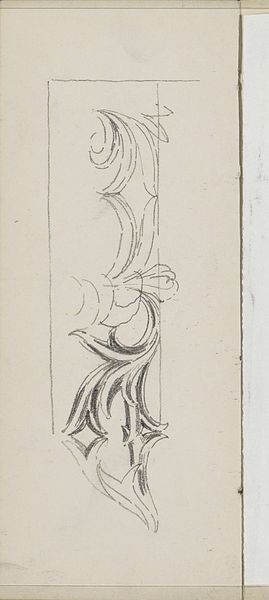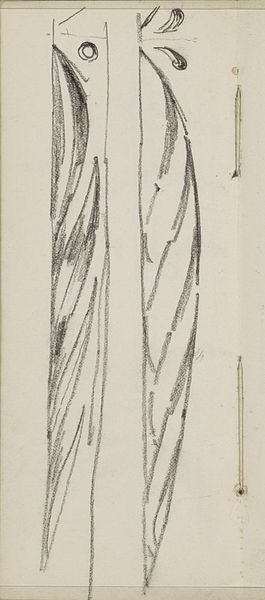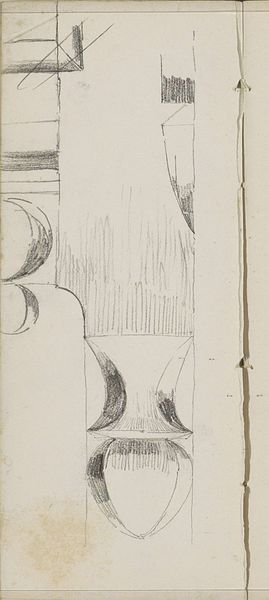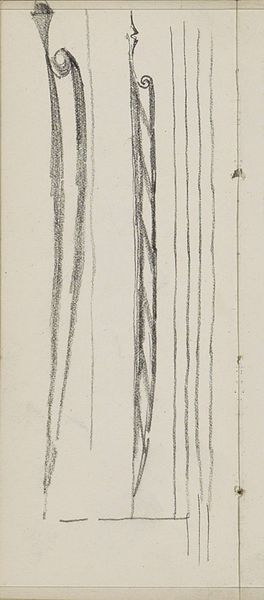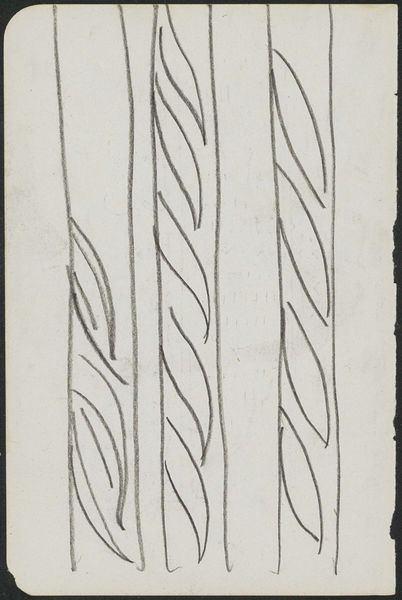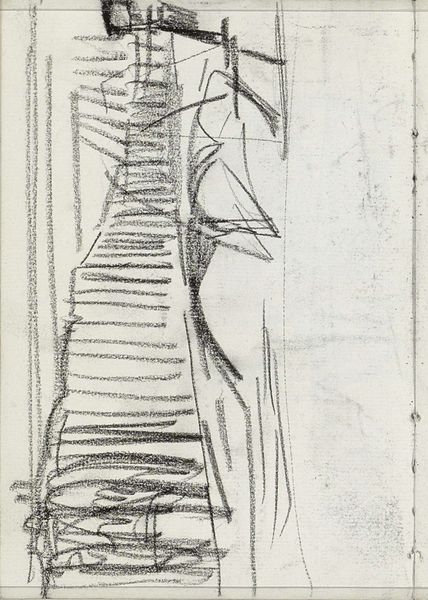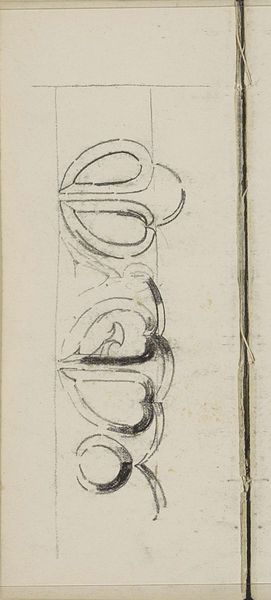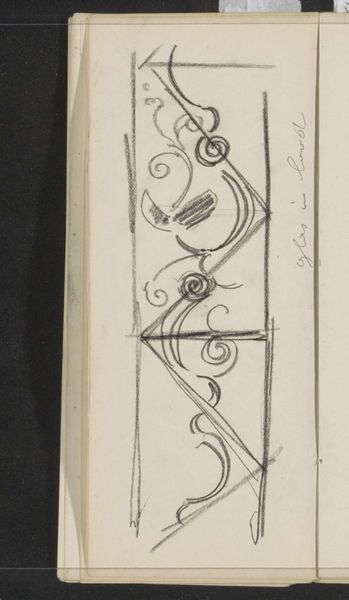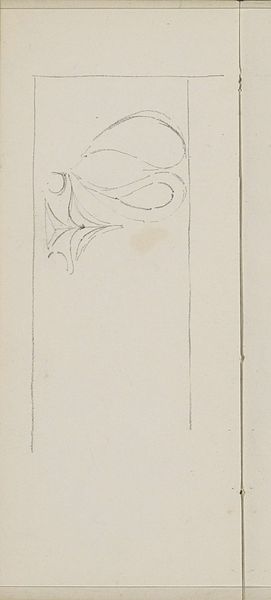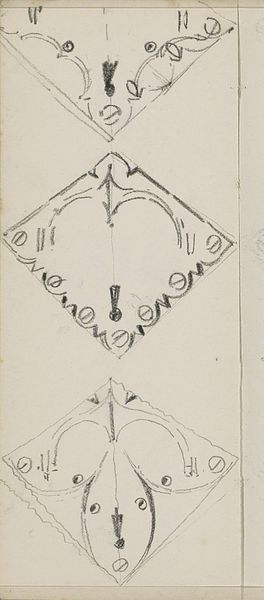
drawing, pencil, graphite
#
drawing
#
amateur sketch
#
toned paper
#
light pencil work
#
art-nouveau
#
quirky sketch
#
incomplete sketchy
#
form
#
personal sketchbook
#
ink drawing experimentation
#
pen-ink sketch
#
pencil
#
line
#
graphite
#
sketchbook drawing
#
sketchbook art
Copyright: Rijks Museum: Open Domain
Curator: This is "Ornamenten met rolwerk," a drawing by Gerrit Willem Dijsselhof. Its creation is situated between 1876 and 1924. We see it as a testament to Dijsselhof’s engagement with the artistic currents of his time, here on display at the Rijksmuseum. Editor: It's a compelling image, even in its sketch-like state. There's an Art Nouveau sensibility, definitely. The recurring motifs suggest a planned application, maybe for furniture or textiles? It has an iterative feel about its process. Curator: Precisely. Dijsselhof, though often framed as a decorative artist, straddled the line between art and craft, defying categorization. He explored wood carving and furniture design. Editor: Considering that era, I wonder about the context of artistic production. How did artists like Dijsselhof navigate the social hierarchy, balancing their artistic expression with the demands of patronage or commercial interests? Was there a clear separation in his mind between 'fine art' and applied design? Curator: These are central questions when looking at his artistic intention and output. Dijsselhof aimed for art to be an experience. His work often intersected with socialist ideals— a fusion of beauty with the everyday lives of the common person. There were even efforts at communal workshops around this time, hoping to give people artistic exposure and careers, thereby uplifting them. Editor: So this "sketchbook art" may then reflect a conscious effort to integrate artistic practices more deeply into societal structures. It reminds me how art movements play a huge role in politics. This brings into question accessibility and the social function of art at the time, a direct rejection of elitism. Curator: I completely agree. This piece offers a valuable window into those efforts, showcasing a desire to democratize design. Its rough nature is an authentic, tactile demonstration of this, of artistic thought in its infancy. Editor: Yes, studying these forms of artistic intention is important. This shows us not just finished work, but artistic desire— which leads me to view such works as political testaments and artistic attempts at reshaping the values of labor, consumption and daily life. Thanks for pointing out all this context! Curator: The pleasure was all mine. There’s a beautiful complexity when we consider all its material and political roots.
Comments
No comments
Be the first to comment and join the conversation on the ultimate creative platform.
